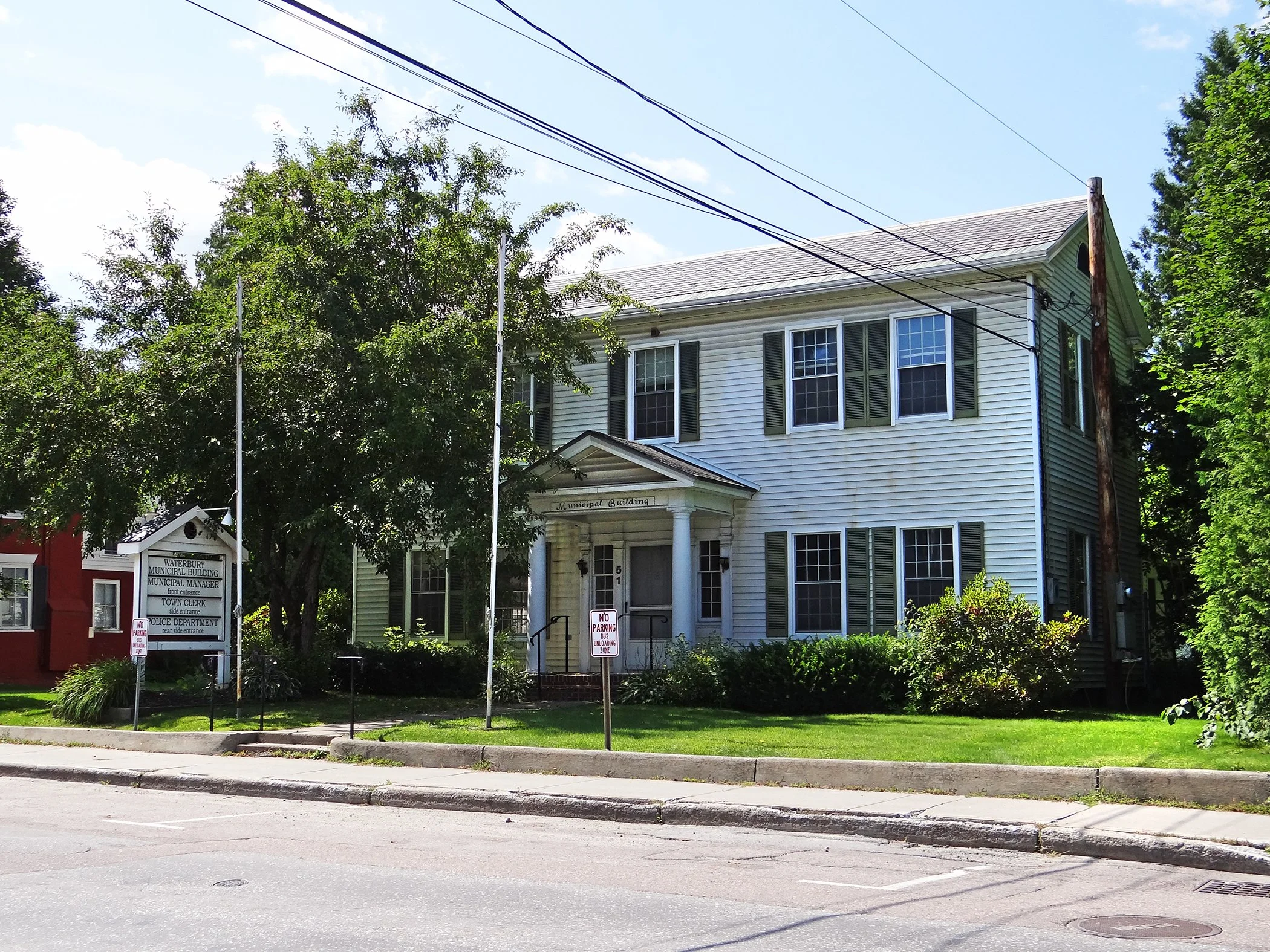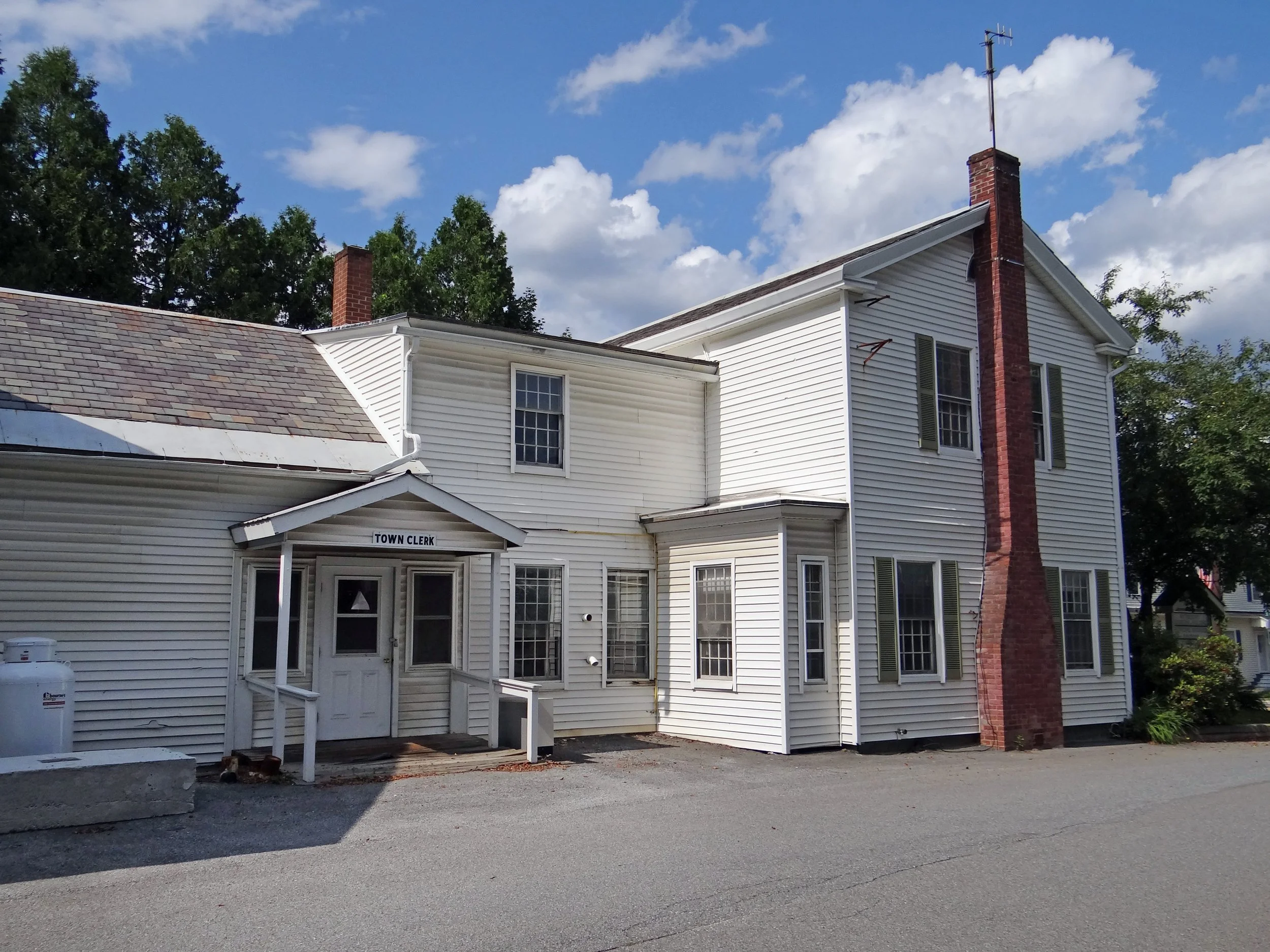Public hearing will outline housing proposal for 51 S. Main
Aug. 25, 2022 | By Lee Kahrs | CorrespondentToday, the lot at 51 S. Main is used for parking. Photo by Lisa Scagliotti
Eleven years after Tropical Storm Irene left Waterbury’s town offices unusable, a new proposal to build affordable housing on the now-empty property at 51 South Main Street has emerged for the community to consider.
The Board of Commissioners of the Edward Farrar Utility District will hold a public hearing next Wednesday, Aug. 31, in the upstairs meeting room of the Main Street fire station starting at 6:30 p.m.
Multiple officials will be on hand to present information regarding a proposal from the nonprofit Downstreet Housing & Community Development organization based in Barre. Downstreet sees potential to construct 24-30 affordable and mixed-income housing units on what is now a municipal parking lot.
Representatives of the agency recently delivered packets of information on the proposed project to neighboring property owners. A letter from project manager Kaziah Haviland, introduces the concept.
“Downstreet’s intent is to create year-round rental studios, one‐bedroom and two‐bedroom apartments that are affordable for residents,” Haviland wrote. “We hope to create further opportunity for the people who work here, to live here. We want to provide more homes for the restaurant industry workers, teachers, nurses, and grocery clerks to live in the community they serve.”
Downstreet is familiar with developing and managing housing in Waterbury. After Irene, it developed the Ladd Hall apartments located on South Main Street in a reconstructed former state office building. It also owns and manages two senior housing properties, Green Mountain Seminary in Waterbury Center and the Stimson-Graves building on Stowe Street.
The 51 S. Main property previously contained a two-story building used for years as the town and village offices and the former village police department. Flooding from Tropical Storm Irene in August 2011 caused a significant fuel spill in the basement and left the building damaged and unusable. New offices eventually were constructed along with a new public library now at 28 North Main Street.
The former offices were torn down in 2019. In the years since Irene, several proposals to build housing on the site have been floated, but none have gained enough support from either local officials or the community to move forward.
Formerly owned by the village government, the property now is owned by the utility district which inherited village properties when the village municipality was dissolved several years ago.
Haviland and Downstreet Director of Real Estate Development Nicola Anderson appeared before the utility district board at its July 17 meeting to discuss the idea and emphasized the importance of public outreach and communication.
“We’re really passionate about making sure the public is involved,” she told the board.
The letter to nearby property owners asks for their input. “We are still exploring the potential of the lot and any concerns you have are valuable to us as we shape the building and surrounding features,” Haviland wrote.
The former two-story home at 51 South Main Street that served as Waterbury's town offices was razed in 2019. File photo by Gordon Miller
The side entrance opened into the Town Clerk’s Office. Further back was the Waterbury Police Department offices. File photo by Gordon Miller
Although Downstreet does not have detailed design plans yet, its representatives say they want the project to fit the proposed location giving consideration to building height, for example. “We do not want to tower over other existing structures,” Haviland wrote.
A new structure should cast minimal shadows on surrounding buildings so it does not interfere with existing or future solar panels. It also would be designed with a front porch to fit in with other buildings along the street.
Utility district board Chair Skip Flanders said he is eager to work with Downstreet on developing the site.
“Hopefully this project will go forth and be able to meet part of the housing need in Waterbury and the town plan,” Flanders said in a recent interview. “It increases densities in what was the former village and connects [to] the water and sewer.”
The meeting next week will include Downstreet representatives and several local officials to discuss details of the project as well as the process that would be needed if it moves forward.
Flanders said he will offer a history of the site – something the utility district highlighted in its annual report in 2021. Known as the Marsh Wells Crossett House, the former home on the site was built around 1815-20 and was home to several consecutive families before it became Waterbury’s town hall.
Waterbury Select Board member Alyssa Johnson, former chair of the Planning Commission, will discuss the housing objectives in the town plan as well as the zoning issues with the site. Municipal Manager Bill Shepeluk will explain the timing and process for both a utility board and public vote on the matter.
Flanders said he also has invited local restaurant owners to attend to discuss the need for housing and how that affects their ability to hire staff. “They have people who want to work, but they can’t find housing they can afford,” he said.
That is a refrain being heard all over the state, as affordable housing post-pandemic has become a top issue in Vermont. With the real estate boom that saw home prices rise to new highs and the lack of affordable housing stock, many employers are finding it challenging to hire staff who can live near their jobs.
2022: Housing emerges as a priority
The interest by Downstreet comes as housing emerges as a top priority in the community.
Last fall, Revitalizing Waterbury worked with the New York state consulting firm Main Street Group to survey local residents on what they thought the housing needs are in the area. A total of 114 people participated in the survey, according to the executive summary posted on the Revitalizing Waterbury website.
One key point respondents made had to do with the type of housing they said Waterbury needs, according to RW’s Economic Development Director Mark Pomilio Jr. Previous surveys, including one done in 2012, found people desiring single-family homes with an average of three bedrooms and land around them. “Now the need has really changed to studio-size to two-bedroom, and even apartments are fine for a lot of people,” he said.
A total of 87.5% of those responding said studio, one- and two-bedroom apartments would be adequate and those answers came from both young people early in their careers and empty-nesters looking to downsize.
The survey also found that housing prices in Waterbury rose 30% in the last two years – by about $90,000 – while income levels remained stable. “So buying a house is less affordable, and it changes the market and what people are looking for,” he said.
Other recommendations from the survey included support for increasing density levels for housing development, openness to evaluating existing structures that could be converted into housing, and interest in converting short-term rentals into year-round leased homes.
RW officials have said they would like to participate in ongoing efforts to spark new housing development, particularly given that having more homes available will serve those who both own and run local businesses and work there.
“Our organization is definitely wanting subsidized affordable housing as well as market rate housing, so that we can really get the people that work in Waterbury to live in Waterbury, so they don't have to worry about traveling from all over to work here,” Pomilio said.
In June, the Waterbury Select Board voted to create a Waterbury Area Housing Task Force; members have not yet been named to it.
Shepeluk has also told elected officials of discussions he’s had with state officials regarding the former Stanley-Wasson parcel in the state office complex that could be another potential site for Downstreet or other housing developers to build a multi-unit project.
The spot was considered for new municipal offices and the library after Tropical Storm Irene but voters rejected a bond to finance the project. The state in 2021 demolished the buildings on the site which now lies vacant near Park Row and the end of Randall Street.
The timeline
Downstreet officials say they have a relatively narrow timeline with a deadline coming up on Nov. 10 to apply for grant funding it would use for the project.
The first step would be for the utility district’s Board of Commissioners to vote on whether it would like to sell the property to Downstreet. It currently is assessed at $130,000, Flanders said.
Next, voters in the utility district would need to weigh in on the sale.
“We’ll have to have a properly warned meeting, where the voting residents of the utility district will have to say yes, we want to sell it, or no, we don’t,” Flanders explained. “If it’s ‘yes,’ we'll proceed. If it's ‘no,’ we'll have to look at other alternatives or how (the proposal) might be modified.”
Haviland said that Downstreet is willing to take the chance on a real estate transaction that involves more steps than usual.
“It's a risk that we're willing to take,” she said when she addressed the board meeting recently. “We really want to bring housing and that's why we're here today. There's a risk to getting involved in any acquisition, but it’s something we want the public to be involved in, and, as the end nonprofit compared to a private developer, developing that relationship.”



